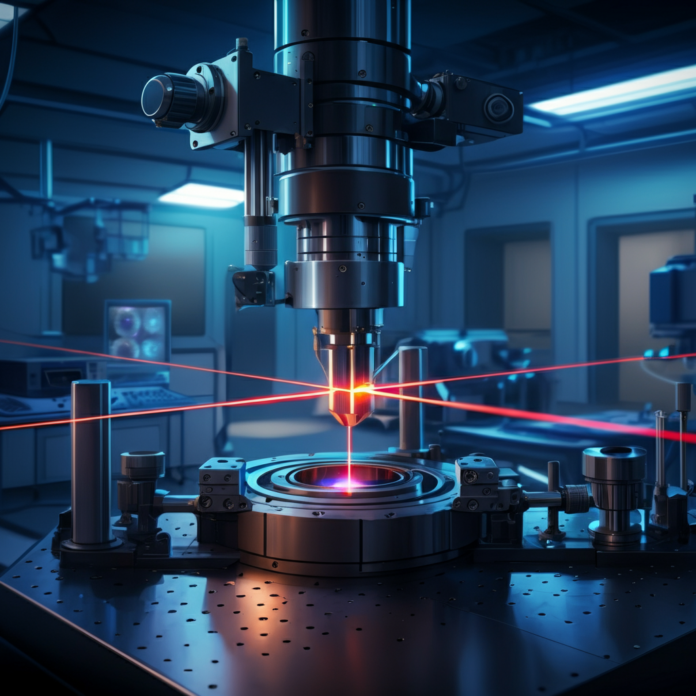For optics engineers, laser researchers, and imaging specialists, precision is more than just a goal—it’s a necessity. That’s why high-power pinholes have become indispensable in advanced optical systems. These precisely fabricated components serve as critical tools for controlling light, filtering beams, and ensuring the precision required in cutting-edge technologies.
This article dives into the world of high-power pinholes, covering their purpose, features, applications, and selection criteria. Whether you’re refining a laser system or developing scientific instruments, you’ll gain valuable insights into why these components are central to modern optical engineering.
Key Features and Benefits of High-Power Pinholes
High-power pinholes are engineered for precision and durability, making them indispensable for a wide array of optical applications. Here are their key features and the advantages they offer for professionals in laser research, imaging, and beyond.
1. Heat Resistance
High-power pinholes are designed to withstand intense laser beams without distorting or degrading. Their thermal resistance ensures they perform consistently, even in high-energy environments. This makes them particularly valuable in industrial and scientific laser systems.
2. Precision Apertures
Manufactured with micron-level precision, these pinholes excel at tightly controlling beams. Their exact aperture sizing ensures researchers and engineers achieve the specificity required for tasks like focusing, alignment, and spatial filtering.
3. Excellent Durability
Constructed from robust materials, high-power pinholes can endure prolonged use without compromise. This durability reduces maintenance needs and increases the reliability of optical setups.
4. Enhanced Imaging Performance
For imaging specialists, incorporating high-power pinholes means achieving sharper, more detailed results. They minimize aberrations, ensuring only the desired portion of light passes through.
Benefits Recap:
- Reliable performance under high laser intensities.
- Precise control of beamline alignment and shaping.
- Extended lifespan, minimizing downtime and replacements.
- Improved imaging accuracy and reduced noise interference.
Materials and Manufacturing
Creating high-power pinholes demands a mix of advanced materials and state-of-the-art manufacturing technology.
Material Composition
Most high-power pinholes are crafted from durable materials like stainless steel, molybdenum, or tungsten. These metals offer the thermal resistance and structural integrity needed to handle intense light without deformation.
For applications requiring minimal reflectivity or specific optical properties, coatings such as anodized aluminum or black optical coatings may be applied. These coatings further enhance performance by minimizing unwanted reflections or scatter.
Precision Manufacturing
The production of high-power pinholes involves cutting-edge techniques, such as laser drilling and photolithography. These methods achieve aperture sizes with tolerances as tight as ±1 micron.
Manufacturing steps typically include:
- Laser Drilling: Provides the high level of accuracy needed for aperture creation.
- Surface Treatment: Ensures a smooth finish to reduce optical noise.
- Quality Control: Rigorous inspections guarantee that every pinhole meets exacting standards for diameter, flatness, and alignment.
By combining robust materials with meticulous craftsmanship, manufacturers produce pinholes that deliver exceptional performance even under demanding conditions.
Applications of High-Power Pinholes
High-power pinholes are versatile across numerous industries and research fields, often acting as a silent workhorse in sophisticated systems. Below are some prominent use cases.
1. Laser Systems
- Beam Shaping and Collimation: Pinholes are frequently used to refine laser beams, ensuring uniformity and precision for industrial cutting, engraving, or medical applications.
- Mode Cleaning: They help eliminate higher-order modes in laser resonators, improving beam quality.
2. Imaging Systems
- Astronomical Telescopes: High-power pinholes are used to filter unwanted light and enhance the quality of captured images.
- Microscopy: They improve the resolution of imaging systems by blocking stray light, enabling researchers to focus on specific details.
3. Scientific Instruments
- Spectroscopy: Pinholes are integral in reducing signal noise during spectral analysis.
- Particle Accelerators: They ensure beam alignment and precision in high-energy experiments.
4. Industrial Applications
- Material Testing: High-power pinholes allow for pinpoint laser targeting in material stress tests.
- Manufacturing Quality Assurance: Applied in systems where minute alignment and precision are critical for inspection processes.
Each of these applications underscores the unmatched value that high-power pinholes bring to advanced optical systems.
How to Choose the Right High-Power Pinhole
Selecting the right high-power pinhole for your application involves considering several factors. Here’s a quick guide to ensure you make an informed decision.
1. Aperture Size
The aperture directly influences performance. For laser systems, ensure the pinhole size matches your beam diameter needs. Smaller apertures work better for fine filtering, while larger sizes allow more light to pass for broader applications.
2. Material Compatibility
Consider the environment in which the pinhole will operate. For high-temperature or high-energy systems, choose materials like tungsten or molybdenum. If reducing reflectivity is a priority, opt for coated pinholes.
3. Alignment Requirements
High-power pinholes must integrate seamlessly with your optical setup. Look for products with mounting options that suit your equipment, such as threaded mounts or compatible adapters.
4. Application-Specific Factors
- Laser Systems: Opt for pinholes with high damage thresholds to withstand intense beams.
- Imaging Systems: Focus on pinholes with precision edges to reduce noise and maximize clarity.
- Scientific Equipment: Ensure compatibility with existing setups or seek custom-manufactured options.
Bonus Tip: Always consult with a trusted manufacturer or supplier for guidance tailored to your project’s unique requirements.
Why High-Power Pinholes are the Future of Optical Engineering
High-power pinholes represent a small but monumental step forward for advanced optical systems. By enabling unmatched precision, reliability, and performance, they unlock new possibilities across industries.

